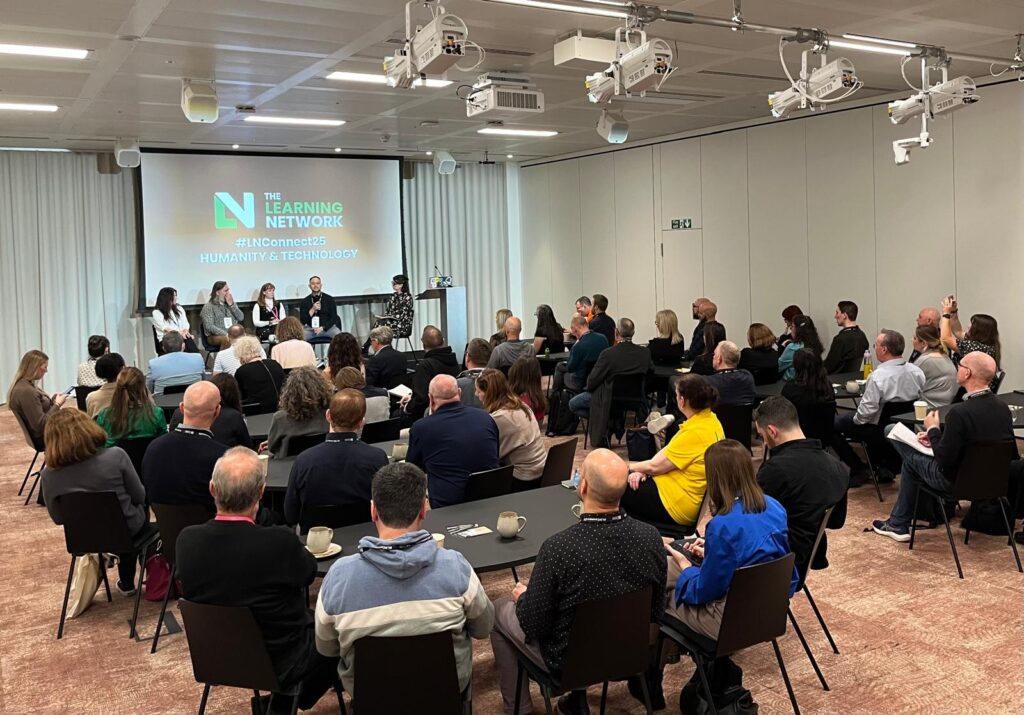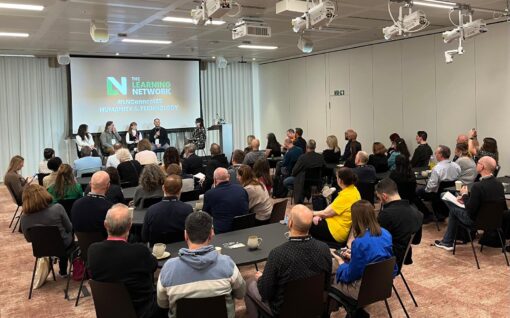Redefining the L&D value proposition – a review of Connect 2025
The Learning Network’s Connect 2025 conference explored the intersection of humanity and technology. And it is at this intersection that the role of L&D is being redefined.
What does it mean to be human in a technology-driven world of work and what’s the role of L&D in shaping that world? These were the big questions the Learning Network’s Connect 2025 conference aimed to answer.
The conference tackled these questions from a variety of perspectives. I managed to attend sessions on the social and cultural context of AI use, inclusion, the role of AI in learning and where human skills fit.
Three themes emerged from these sessions that reflect the shifting L&D landscape and role of L&D professionals. These are: developing a more strategic mindset, focusing on the social and adaptive dimensions of learning and prioritising human inclusion and connection as a part of the work and learning experience.
Embracing a strategic mindset
One speaker on the AI panel debate told delegates that AI is becoming strategically important in business and this helps shift the perception of L&D. “The C-suite are really paying attention, and they can see this is a really transformative programme that needs to be delivered… we’re not seen as an expense, we’re seen as a kind of impact driver.”
The opportunity for L&D is to move away from a silo mentality of L&D only delivering training to a strategic mentality, where L&D harnesses technology to support organisational success.
One example of this is delivering critical business skills as key organisational resources. That will require L&D to develop organisational intelligence around skills to understand which skills are strategically important to the business, who has them and who doesn’t.
L&D also can use AI to help capture tacit and informal knowledge that previously went undocumented, sharing it across the organisation to boost collective performance. As one panellist said, “AI helps us capture the tacit knowledge in the organisation and to share it and scale it.”
Social and adaptive learning
In his keynote, author and researcher Julian Stodd told delegates that the sociological context of work has changed. “We are now radically connected in ways that are beyond the oversight or control of any organisation and indeed any government or law enforcement agency.”
This technology-facilitated connection changes the game for L&D, according to Stodd. L&D’s role is increasingly about enabling knowledge creation and sharing.
“Increasingly, our role in learning is less about the control and dissemination of the formally validated, more about the enablement of the socially co-constructed. We’ve distributed our cognition across these networks and communities.”
And within this more socially enabled approach, organisations must ensure workers can experiment to innovate. “It’s important to get lost to learn… We mustn’t mistake perfection and clarity for success, because often what we need to do is build divergence and understand how to use failure.”
This is something I explored in my talk on identifying, understanding and supporting shadow L&D – the learning and innovation that happens day in, day out in people’s jobs and that L&D and HR teams are unaware of.
Human inclusion and connection
The panel debate on inclusion and the final keynote discussing how to give feedback that’s best suited for human brains both shone the spotlight on how learning and work can be improved so that humans can work well and feel valued at work.
One speaker in the panel discussion made the point that accessible and inclusive environments unlock creativity, innovation and performance, all of which impact on business success. “If you want, ultimately, to have a successful business … these are things that you have to pay attention to … If you’re turning a blind eye to them, or worse, having toxic behaviours and not checking it, you’re not going to have that competitive edge.”
The focus needs to be on weaving inclusion and accessibility into organisational culture rather than seeing it as a legal or compliance requirement.
In her closing keynote, founder and director of Synaptic Potential Amy Brann took the example of giving feedback to consider how the brain works and what learning professionals can do to ensure that learning is designed to be brain friendly. The discussions explored the numerous factors that impact on giving and receiving feedback and the challenges of developing a feedback culture within an organisation.
The message from the session was clear: learning professionals need to really understand how humans process, relate to and respond to information and colleagues to improve the learning and work experience and the culture around that.
The adaptive L&D professional
The event provoked honest and open discussions about the existential challenges facing L&D right now. And in so doing it highlighted the type of role that might be emerging for L&D – less control focused and more built on intelligence (such as skills data) that can help drive more strategic decisions. Plus, enablement through social and collaborative approaches that help connect people to each other and to the work.
All of this activity will be supported by technology (AI) which will be used for data and insights (strategic L&D) as well as enablement and delivery.
Is this the future for L&D? Let’s see what unfolds in the coming months . . .
- Slides and resources from my talk on shadow L&D and harnessing employee-led learning (especially around AI and innovation) can be downloaded here.


